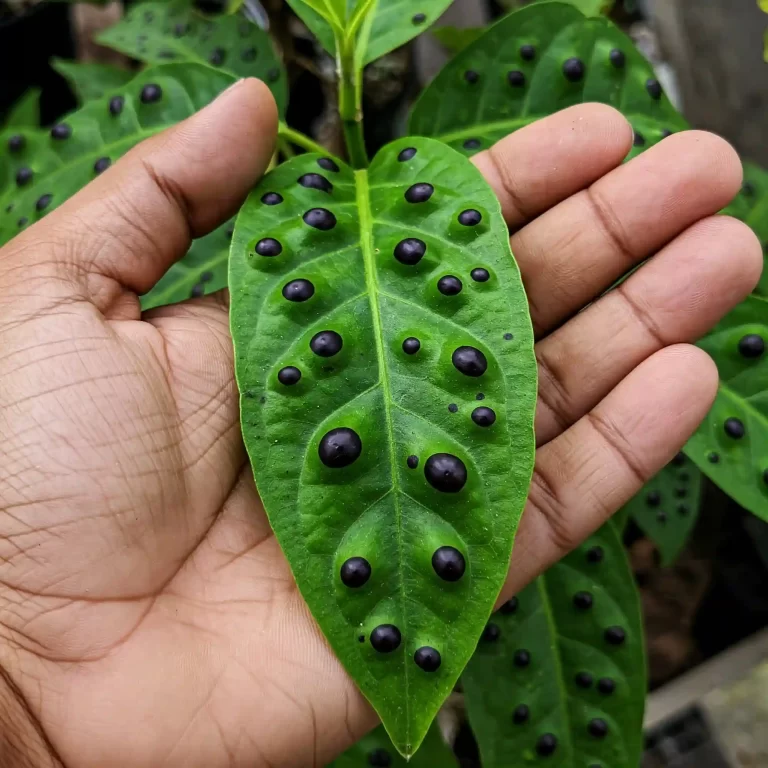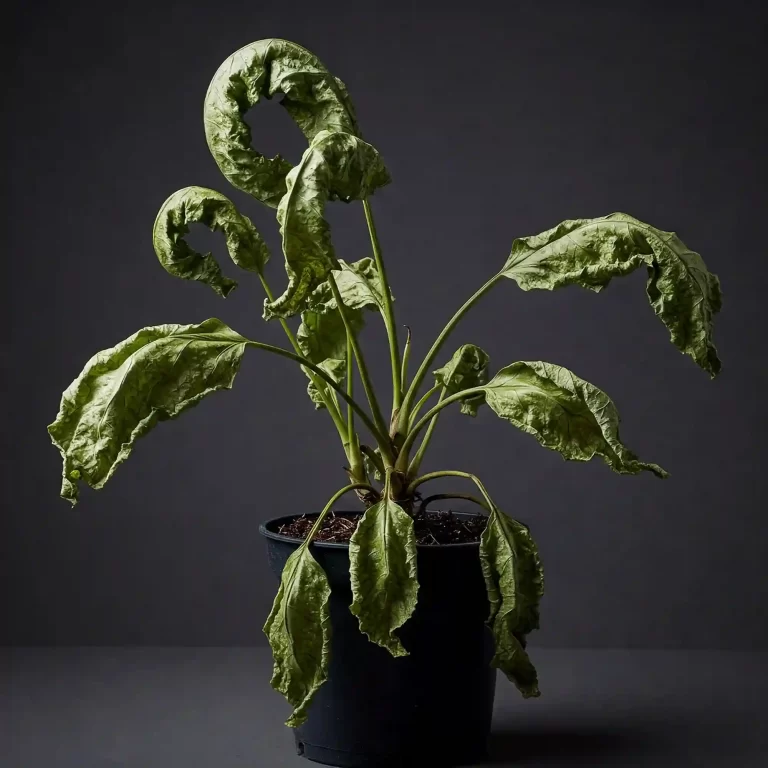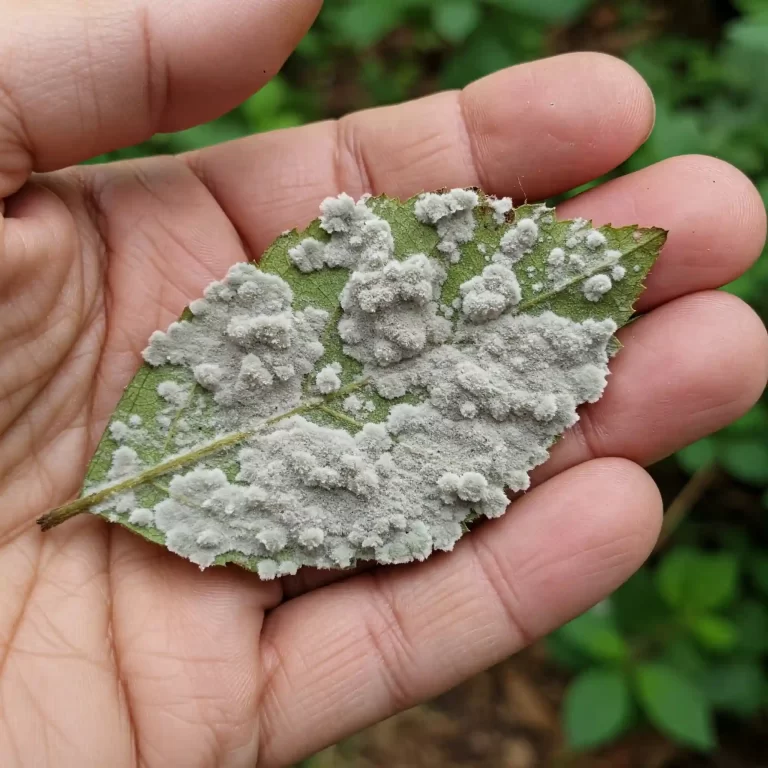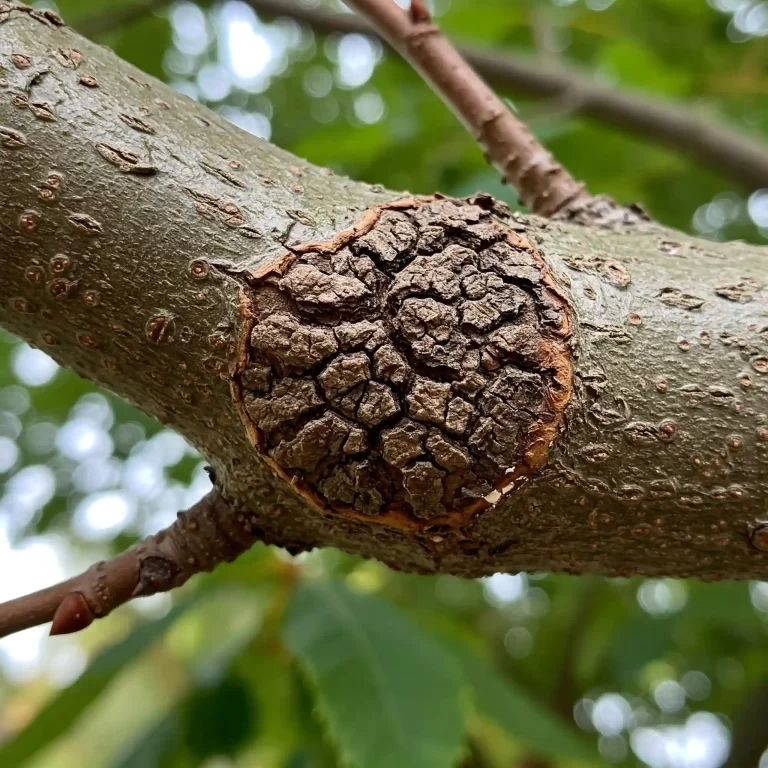| Key Takeaways |
|---|
| – Lemon lime prayer plant is a type of tropical houseplant with colorful foliage that folds up at night like hands in prayer. |
| – It needs bright, indirect light, warm and humid conditions, well-draining and fertile soil, regular watering and fertilizing, occasional pruning and propagating, and good pest and disease control. |
| – It can be propagated by division or stem cuttings, and it can suffer from some common problems, such as root rot, leaf spot, nutrient deficiencies, and environmental stress. |
| – It is a beautiful and rewarding plant to grow, and it can bring some sunshine and joy to your home. |
Did you know that you can grow a mini sun in your home with a lemon lime prayer plant? This plant is a ray of sunshine, with its bright green leaves with yellow edges and purple undersides. It also has a unique habit of folding its leaves like hands in prayer every night, which is why it is called a prayer plant.
In this article, we will show you how to care for a lemon lime prayer plant, which is a type of tropical houseplant with colorful foliage. We will cover the optimal conditions, watering, fertilizing, pruning, propagating, and troubleshooting tips for this plant, as well as some benefits and varieties of the lemon lime prayer plant.
By following our lemon lime prayer plant care guide, you will be able to grow a mini sun in your home and enjoy its lively and colorful foliage.
What is a Lemon Lime Prayer Plant?
The lemon lime prayer plant, also known as maranta leuconeura, is native to Brazil and belongs to the Marantaceae family, which includes other popular houseplants, such as calathea and stromanthe. It is a low-growing plant that can reach up to 12 inches in height and spread. It has oval-shaped leaves that are about 5 inches long and 3 inches wide. The leaves are bright green with yellow edges and purple undersides. The leaves fold up at night, resembling hands in prayer, hence the name.
The lemon lime prayer plant rarely blooms indoors, but it can produce small white flowers in spring or summer. The flowers are not very showy, and they are often hidden by the foliage. The main attraction of the lemon lime prayer plant is its colorful and lively foliage, which can brighten up any room.
How to Provide the Optimal Conditions for Lemon Lime Prayer Plant
The lemon lime prayer plant is a tropical plant that thrives in warm and humid conditions. It is sensitive to extreme temperatures, drafts, and dry air, which can cause stress and damage to the plant. Therefore, it is important to provide the right environment for the lemon lime prayer plant, which includes four main factors: light, temperature, humidity, and air circulation.
Light
The lemon lime prayer plant prefers bright, indirect light. Avoid direct sunlight, which can scorch the leaves. A north or east-facing window is ideal. You can also use a sheer curtain or a blind to filter the light. If the light is too low, the plant may lose its color and become leggy. If the light is too high, the plant may develop brown or yellow spots on the leaves.
You can use a light meter or your hand to check the light intensity. If you can see your shadow clearly, the light is too bright. If you can barely see your shadow, the light is too dim. If you can see your shadow faintly, the light is just right.
Temperature
The lemon lime prayer plant thrives in a temperature range of 18°C to 27°C. Avoid cold drafts, heaters, and air conditioners, which can stress the plant. If the temperature drops below 15°C, the plant may wilt or die. If the temperature rises above 30°C, the plant may lose its color or stop growing.
You can use a thermometer to monitor the temperature in your home. You can also move the plant to a cooler or warmer spot, depending on the season. For example, you can move the plant away from the window in winter, or closer to the window in summer.
Humidity
The lemon lime prayer plant likes high humidity, around 50% to 60%. You can increase the humidity by misting the leaves occasionally, placing the plant on a tray of pebbles and water, or using a humidifier. Avoid wetting the leaves too much, as this can cause fungal or bacterial infections. Also, avoid placing the plant near radiators or vents, which can dry out the air.
You can use a hygrometer to measure the humidity in your home. You can also use a spray bottle or a mister to mist the leaves. Make sure to use distilled or filtered water, as tap water may contain minerals or chemicals that can harm the plant.
Air Circulation
The lemon lime prayer plant needs good air circulation, but not too strong or direct. You can use a fan to gently circulate the air around the plant, but avoid placing the plant near vents or windows that can create drafts. Drafts can cause the leaves to curl or brown, or the plant to wilt or drop leaves.
You can also open the windows or doors occasionally to let some fresh air in, but make sure to close them when the temperature or humidity changes. You can also clean the leaves with a damp cloth or a soft brush to remove any dust or dirt that can clog the pores of the plant.
Watering, Fertilizing, Pruning, Propagating, and Troubleshooting
The lemon lime prayer plant needs regular watering and fertilizing to keep its soil moist and nutrient-rich. Watering and fertilizing also help the plant to produce new growth and maintain its vibrant colors. The lemon lime prayer plant needs occasional pruning and propagating to keep its shape and size, and to create new plants. Pruning and propagating also help the plant to stay healthy and prevent diseases and pests. The lemon lime prayer plant can sometimes encounter some problems, such as pests, diseases, or environmental stress. Troubleshooting the lemon lime prayer plant can help you identify and solve the issues before they become worse and harm the plant.
How to Water and Fertilize Lemon Lime Prayer Plant
The lemon lime prayer plant needs well-draining, fertile soil. A peat-based potting mix with perlite or vermiculite is a good choice. You can also add some organic matter, such as compost or worm castings, to enrich the soil. The lemon lime prayer plant benefits from regular feeding during the growing season, from spring to fall. Use a balanced, water-soluble fertilizer, diluted to half-strength, every two weeks. Do not fertilize in winter, when the plant is dormant.
The lemon lime prayer plant likes to be kept moist, but not soggy. Water when the top inch of soil feels dry to the touch. Use room-temperature water and avoid overwatering, which can cause root rot. You can also mist the leaves occasionally to increase humidity.
You can use a finger or a moisture meter to check the soil moisture. Water the plant thoroughly until the water drains out of the bottom of the pot. Allow the excess water to drain completely, and do not let the plant sit in water. You can also use a rain gauge or a measuring cup to measure the amount of water you give to the plant. A general rule of thumb is to water the plant with one-fourth of its pot size in water. For example, if the plant is in a 4-inch pot, water it with 1 inch of water.
How to Prune and Propagate Lemon Lime Prayer Plant
The lemon lime prayer plant does not need frequent pruning, as it likes to be slightly root-bound. You can repot every two to three years, or when the plant outgrows its pot. Choose a pot that is one size larger than the current one, and use fresh potting mix. The lemon lime prayer plant can be propagated by division or stem cuttings. You can do this anytime, but spring and summer are the best seasons.
Division
The lemon lime prayer plant can be propagated by division, which is separating the roots into two or more sections, and planting each one in a new pot. To divide the plant, carefully remove it from its pot and gently tease apart the roots with your fingers or a knife. Make sure each section has at least one stem and some roots. Plant each section in a pot that is one size larger than the current one, and use fresh potting mix. Water well and keep the plant in a warm and bright place until it establishes.
Stem Cuttings
The lemon lime prayer plant can also be propagated by stem cuttings, which is cutting a healthy stem with at least two leaves, and placing it in water or moist soil. To take a stem cutting, use a sharp and sterile knife or scissors to cut a 4 to 6 inch stem just below a node, which is where the leaf joins the stem. Remove the lower leaves and place the cutting in a jar of water or a pot of moist soil. Keep the cutting in a warm and bright place, and wait for roots to develop. Change the water every few days or mist the soil to keep it moist. Once the roots are about an inch long, you can transplant the cutting to a larger pot.
You can use a pair of pruning shears or scissors to trim any dead, damaged, or diseased leaves and stems from the plant. You can also pinch off the tips of the stems to encourage bushier growth. You can use a rooting hormone or a honey solution to speed up the rooting process of the cuttings. You can also use a clear plastic bag or a dome to cover the cuttings and create a mini greenhouse effect.
How to Troubleshoot Lemon Lime Prayer Plant Problems
The lemon lime prayer plant is generally easy to care for, but it can sometimes encounter some problems, such as pests, diseases, or environmental stress. Troubleshooting the lemon lime prayer plant can help you identify and solve the issues before they become worse and harm the plant.
Pests
The lemon lime prayer plant can attract some common houseplant pests, such as spider mites, mealybugs, aphids, and scale insects. These pests can suck the sap from the plant and cause yellowing, wilting, or curling of the leaves. You can prevent and treat pests by keeping the plant clean and dust-free, inspecting it regularly, and spraying it with a mild soap solution or a neem oil spray. You can also use a cotton swab or a toothbrush to remove any visible pests from the plant.
| Common Pests | Symptoms | Treatment |
|---|---|---|
| Spider mites | Tiny red or black dots on the leaves or stems, webbing on the underside of the leaves, yellow or brown spots on the leaves | Spray the plant with a mild soap solution or a neem oil spray, wipe the leaves with a damp cloth, increase the humidity around the plant |
| Mealybugs | White, cottony masses on the leaves or stems, sticky honeydew on the leaves or the surface below the plant, black sooty mold on the leaves, yellow or brown spots on the leaves | Spray the plant with a mild soap solution or a neem oil spray, wipe the leaves with a damp cloth or a cotton swab dipped in alcohol, remove any infected parts from the plant |
| Aphids | Small, green, yellow, or black insects on the leaves or stems, sticky honeydew on the leaves or the surface below the plant, black sooty mold on the leaves, curled or distorted leaves | Spray the plant with a mild soap solution or a neem oil spray, wipe the leaves with a damp cloth, remove any infected parts from the plant, introduce natural predators, such as ladybugs or lacewings |
| Scale insects | Brown, oval-shaped scales on the leaves or stems, sticky honeydew on the leaves or the surface below the plant, black sooty mold on the leaves, yellow or brown spots on the leaves | Spray the plant with a mild soap solution or a neem oil spray, wipe the leaves with a damp cloth or a cotton swab dipped in alcohol, remove any infected parts from the plant |
Diseases
The lemon lime prayer plant can suffer from some fungal or bacterial diseases, such as leaf spot, root rot, or powdery mildew. These diseases can cause brown, black, or white spots, patches, or fuzz on the leaves or stems. You can prevent and treat diseases by avoiding overwatering, improving the drainage and air circulation, and removing any infected parts from the plant. You can also use a fungicide or a baking soda solution to spray the plant.
| Common Diseases | Symptoms | Treatment |
|---|---|---|
| Leaf spot | Brown, black, or yellow spots or patches on the leaves, sometimes with a yellow halo around them, drooping or falling leaves | Remove any infected leaves from the plant and the soil, spray the plant with a fungicide or a baking soda solution, avoid wetting the leaves, improve the air circulation |
| Root rot | Soft, mushy, or brown roots, wilting or yellowing leaves, stunted or slow growth, foul smell from the soil | Remove the plant from its pot and wash the roots, cut off any rotten roots, repot the plant in a clean pot with fresh potting mix, water less frequently, improve the drainage |
| Powdery mildew | White, powdery, or fuzzy coating on the leaves or stems, distorted or discolored leaves, reduced growth | Remove any infected leaves from the plant and the soil, spray the plant with a fungicide or a baking soda solution, avoid wetting the leaves, increase the light and air circulation |
Nutrient Deficiencies
The lemon lime prayer plant can show signs of nutrient deficiencies, such as yellowing, browning, or curling of the leaves, or reduced growth. You can prevent and treat nutrient deficiencies by using a balanced, water-soluble fertilizer, diluted to half-strength, every two weeks during the growing season. You can also use a soil test kit to check the pH and nutrient levels of the soil, and adjust them accordingly.
| Common Nutrient Deficiencies | Symptoms | Treatment |
|---|---|---|
| Nitrogen | Yellowing of the older leaves, pale green or yellow new leaves, stunted or slow growth | Apply a nitrogen-rich fertilizer, such as ammonium nitrate or urea, or use an organic source, such as compost or manure |
| Phosphorus | Purple or red coloration on the underside of the leaves, dark green or purple new leaves, stunted or slow growth, reduced flowering | Apply a phosphorus-rich fertilizer, such as superphosphate or bone meal, or use an organic source, such as rock phosphate or banana peels |
| Potassium | Browning or curling of the leaf edges, yellow or brown spots on the leaves, weak or brittle stems, reduced flowering | Apply a potassium-rich fertilizer, such as potassium sulfate or potassium nitrate, or use an organic source, such as wood ash or seaweed |
Environmental Stress
The lemon lime prayer plant can suffer from some environmental stress, such as low light, high temperature, low humidity, or water quality. These factors can affect the health and appearance of the plant, and cause symptoms such as fading, wilting, or dropping of the leaves. You can prevent and treat environmental stress by providing the optimal conditions for the lemon lime prayer plant, as discussed in the previous section.
| Common Environmental Stress | Symptoms | Treatment |
|---|---|---|
| Low light | Fading or loss of color on the leaves, leggy or stretched stems, reduced growth | Move the plant to a brighter spot, but avoid direct sunlight, use a grow light or a fluorescent lamp to supplement the natural light |
| High temperature | Wilting or drooping of the leaves, loss of color or crispiness on the leaves, reduced growth | Move the plant to a cooler spot, but avoid cold drafts, use a fan or a mister to cool the plant, water more frequently |
| Low humidity | Browning or curling of the leaf edges, dry or crispy leaves, reduced growth | Mist the leaves occasionally, place the plant on a tray of pebbles and water, or use a humidifier, avoid placing the plant near radiators or vents |
| Water quality | Yellowing or browning of the leaves, black or brown spots on the leaves, reduced growth | Use distilled or filtered water, or let the tap water sit overnight before using, avoid using water that is too hot or too cold, water the plant thoroughly and let the excess water drain |
Benefits and Varieties of Lemon Lime Prayer Plant
The lemon lime prayer plant is not only a beautiful and rewarding plant to grow, but it also has some benefits and varieties that make it even more appealing. Here are some of them:
- The lemon lime prayer plant is an air-purifying plant, which means that it can remove some toxins and pollutants from the air, such as formaldehyde, benzene, and xylene. This can improve the air quality and the health of your home.
- The lemon lime prayer plant is a pet-friendly plant, which means that it is non-toxic and safe for cats and dogs. However, you should still keep the plant out of reach of your pets, as they may chew on the leaves or knock over the pot.
- The lemon lime prayer plant is a symbol of gratitude, faith, and devotion, according to some cultures and traditions. It is also associated with positive energy and happiness, as its bright colors and lively movements can cheer up any mood.
- The lemon lime prayer plant is one of the many varieties of prayer plants, which have different colors and patterns on their leaves. Some of the other varieties are:
- Red prayer plant, which has dark green leaves with red veins and red undersides.
- Kim prayer plant, which has dark green leaves with silver spots and purple undersides.
- Rabbit’s foot prayer plant, which has light green leaves with dark green spots and purple undersides.
- Herringbone prayer plant, which has light green leaves with dark green stripes and purple undersides.
Conclusion
The lemon lime prayer plant is a type of tropical houseplant with colorful foliage that folds up at night like hands in prayer. It needs bright, indirect light, warm and humid conditions, well-draining and fertile soil, regular watering and fertilizing, occasional pruning and propagating, and good pest and disease control. It can be propagated by division or stem cuttings, and it can suffer from some common problems, such as root rot, leaf spot, nutrient deficiencies, and environmental stress.



